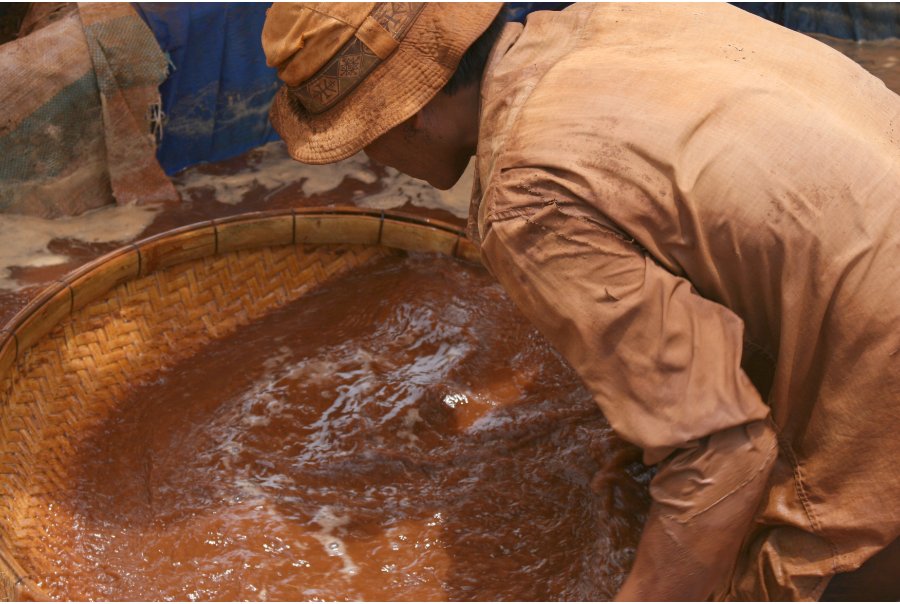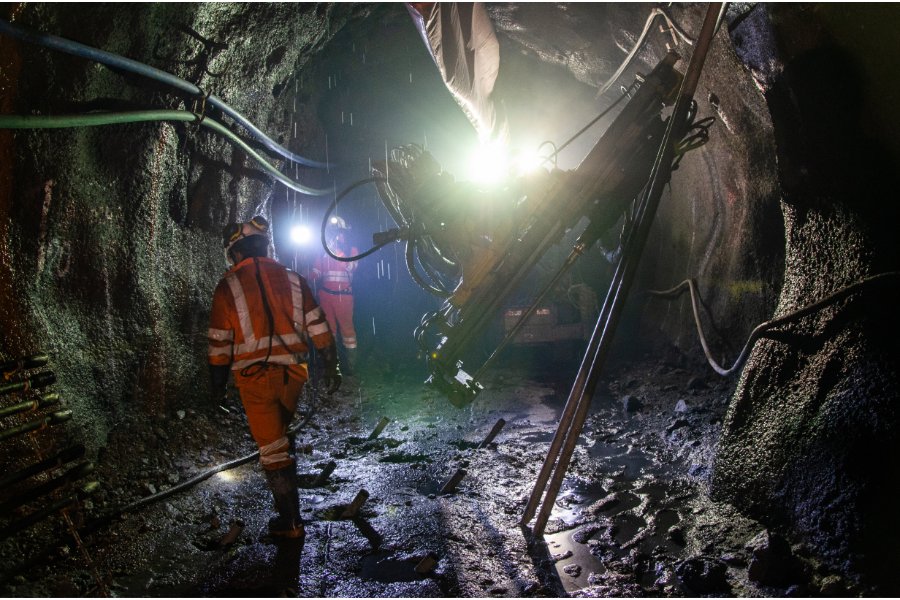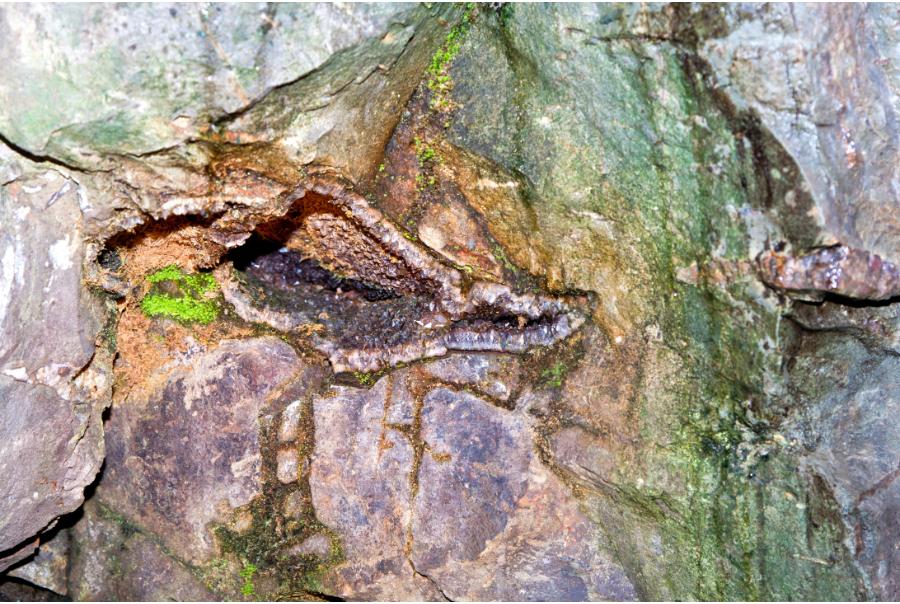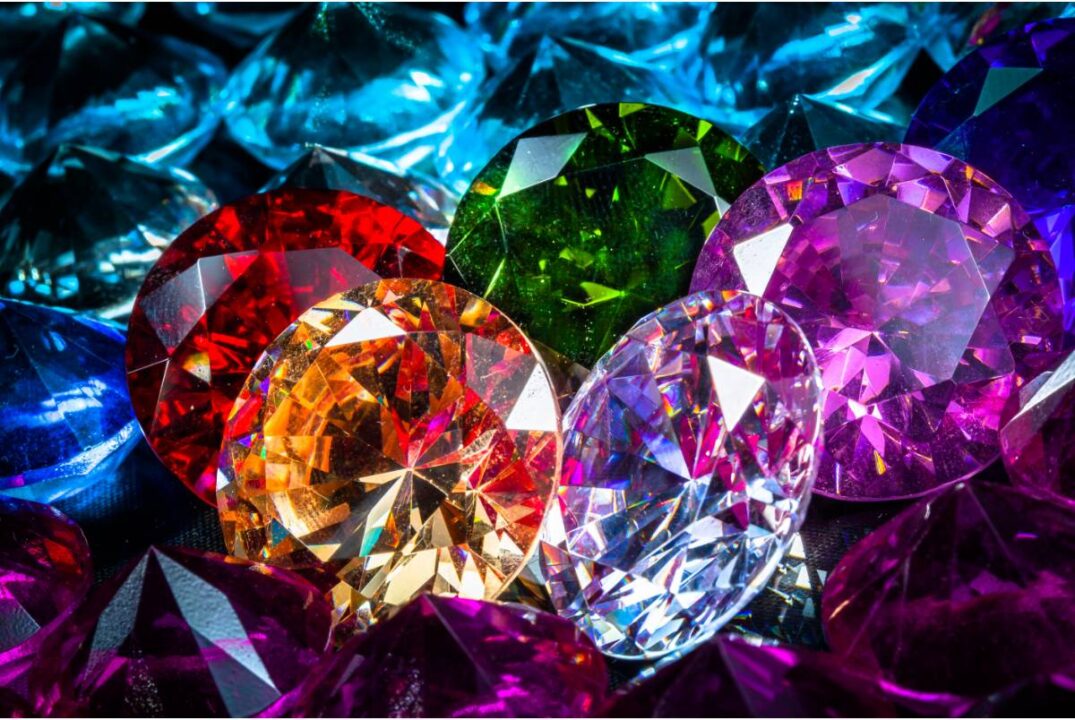In collaboration with BIRON®
Let’s picture a scenario. You’re at the handicraft market, browsing locally made jewellery. You spot a cute ring with a sparkly gem set inside it, and decide to buy it. How could that be doing any wrong?
The unfortunate fact is that in today’s hyper-globalized world, the processes used to source, transport, and sell energy, food, fashion, technology parts (among the most polluting industries ranked in a report released by The Eco Experts), happen on a huge scale that has drastic ethical implications for the environment and people involved. Every purchase made perpetuates these impacts. It’s time to take a closer look at the true cost of the gems we wear.
Negative environmental impacts of gemstone mining

Precious gemstones are mined in various ways, ranging from informal artisanal mining to technical methods that are resource- and energy-heavy. The main gemstone mining methods are surface mining (including open-pit and strip mining), underground mining (including tunnelling and chambering), and alluvial mining (that is, panning and dry digging). Below, we dig deep into the most detrimental mining environmental effects.
Human exploitation
Human exploitation such as forced labour and child labour is an all-too-common effect of gemstone mining. Many mining operations take place in developing countries where gem deposits are plentiful. These workers are often subjected to unregulated working conditions and low pay. Besides violating fair trade principles, there are even cases where the extraction of certain gems funds terrorist and guerilla activity, such as in the case of blood diamonds.
The negative impacts of mining on the environment are also felt by the human communities living near mining sites, who can experience increased air pollution and water scarcity as a result of mining operations.
Water contamination
Water contamination is another major mining side effect. The process of extracting gems often involves the use of toxic chemicals like cyanide, ammonium nitrate, and fuel oil (ANFO), which leak into nearby water sources. This can lead to potentially life-threatening health consequences for both humans and wildlife, including contamination of drinking water and alluvial fish habitats, as well as disruption of aquatic ecosystems.

Carbon emissions
Another significant environmental effect of gem mining is the CO2 emissions. The use of heavy machinery and equipment in mining operations typically relies on fossil fuels, which leads to the release of greenhouse gases (GHG) into the atmosphere. Additionally, the transportation of gemstones from mining sites to end consumers through trucks and airplanes further exacerbates GHG emissions.
Animal habitat destruction
Next, mining operations often encroaches on wildlife habitats and disrupts delicate native ecosystems. This can lead to the displacement of animals, loss of biodiversity, and complete destruction of natural habitats. In some cases, mining operations can even lead to the extinction of certain species. Especially for this reason, it’s essential for mining operations to incorporate environmental rehabilitation and/or decarbonization programmes.

Danger to worker health
Endangerment to worker health is another major ethical concern in the gemstone mining industry. The effects of mining on human health include miners being exposed to inorganic lead (resulting in anaemia, among other conditions), manganese, and mercury. This has been proven to lead to long-term health consequences resulting from prolonged exposure to toxicants, which actually accumulate in the body.
The precarious environments of mines themselves can be immediately dangerous to workers. They risk injuries from falls, cave-ins, equipment accidents, or even explosions.
Unregulated working conditions can also be prevalent in small-scale mining sites, with limited access to clean water, sanitation facilities, personal protective equipment, and medical care leading to health issues in the long-term.
Does mining have any positive effects?

Mining of precious minerals can contribute to economic growth and creating jobs in local communities. Some mining companies work to adopt more sustainable and responsible practices, which can help mitigate the negative environmental and social impacts of mining, or even create a positive net effect.
However, these positive effects of mining must be weighed against the negative. It’s generally agreed that mining will always be accompanied by negative impacts, and that the most that players in the gem industry can do is minimise their footprint as much as possible. Alternatives to unethically mined gemstones include:
- heirloom gems;
- gems mined in small-scale operations;
- buying from jewellers that openly disclose the traceability of their products;
- lab gemstones.
Precious gems of most varieties can be created in a laboratory, where they can be grown to size specification and can be more eye-clean than mined stones, at a significantly lower price point. Of course, it’s important to note that not all man-made gems are unquestionably better for the environment – it’s still important to do your due diligence as a shopper. For instance, one way is to check what type of energy the sustainable gemstone provider uses and see how renewable or clean that energy is.
Meet BIRON®
BIRON® is a brand under Inter-Pacific, a company based in Hong Kong that produces and sources exquisite lab-grown coloured gemstones and diamonds. They support ethical jewellery brands and other sustainable businesses through gemstone sourcing, as well as cutting and polishing services. Visit their website to learn more about their work in making cruelty-free gems accessible to all types of brands.

- Website: https://biron-gems.com/
- Email: hello@biron-gems.com
- Phone number: +852 2898 1178
Header image credits: Thaisign via Canva




